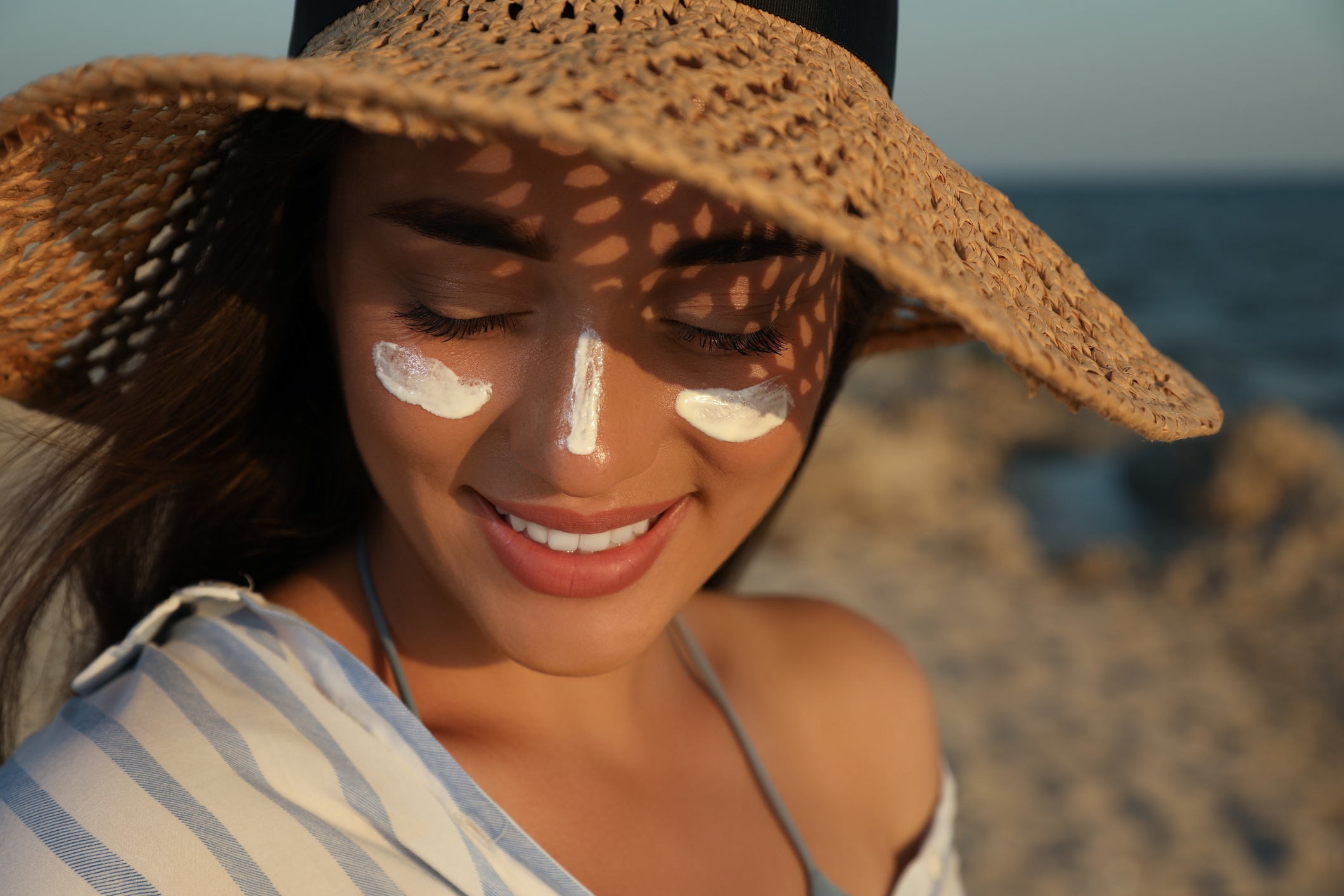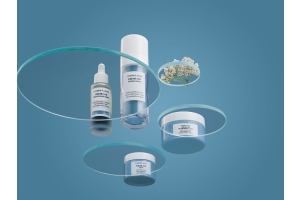Table of Contents
It’s a well-known fact that daily sun protection is an essential part of any anti-aging skincare routine. Sun exposure can cause premature aging and skin cancer, so adding skin protection is the most effective method to reduce your risk.
However, the order in which one should apply sunscreen in a daily skincare routine isn’t as simple, especially when using several different products. “Do you put sunscreen on before or after makeup?” is an important question. If you want to know when to apply sunscreen in your routine, here are a few things you need to know.
Does Makeup Protect Your Skin From the Sun?
Generally speaking, makeup is not enough to protect you from the sun. Some foundations provide a certain SPF within their composition; however, you wouldn’t likely put enough foundation to get complete protection from the sun.
A foundation with SPF can be a beneficial product, but you should still use proper sunscreen on your face and any other exposed areas of your body. Should you apply this type of makeup before or after sunscreen? Like any other makeup, a foundation with SPF should be put on after proper sunscreen.
You might wonder ‘what is tinted sunscreen?’, especially since it could be confused with SPF foundation. As the name implies, tinted sunscreen is an efficient sunscreen that also provides some colour-covering benefit.
When to Apply Sunscreen: Before or After Moisturizer?
The answer to this question depends on the sunscreen you use. If you use a non-mineral sunscreen, also known as ‘chemical’, you should apply it before your moisturizer. The reason is simple: chemical sunscreens must be absorbed by the skin to be effective. If you put it over a moisturizer, you won’t get all its protective power.
If you use mineral sunscreen, also called ‘physical’, you should apply it after your moisturizer. The skin doesn’t absorb mineral sunscreen; the active ingredient stays on top of the skin. When used after your moisturizer, the sunscreen will lock in the hydrating effect of your moisturizer while protecting you from the sun. If you apply physical sunscreen before your moisturizer, your skin will probably not get the hydrating advantage.
Remember that if you stay in the sun for a prolonged period, you must reapply sunscreen. In this case, reapply it to your skin, on top of other products, whether you used a moisturizer or not or are using mineral or physical sunscreen.
Do You Put Sunscreen on Before or After Makeup?
Generally speaking, makeup should be the last step of your routine, whether you use a mineral or non-mineral sunscreen. Both types of sunscreen work best if used directly on the skin, so your skin won’t be as protected if you apply the product on top of the foundation. Makeup should go at the end of any skincare routine; sunscreen is integral to that routine.
However, remember that sunscreen must be reapplied every few hours to remain protective, whether you wear makeup or not. You have a few options if you wear makeup while staying in the sun.
As a first but impractical option, you can redo your routine, including reapplying sunscreen and redoing your makeup.
The second option is to use powder sunscreen for touch-ups. Powder sunscreen provides less protection than other types of sunscreens. In that case, be sure to use mineral sunscreen under your makeup. This option can also help you control unwanted shine, especially if your skin is naturally oilier.
You can also apply liquid sunscreen on top of your makeup. While this is not ideal, it is still better than staying in the sun unprotected.
What Is Tinted Sunscreen?
Tinted sunscreen isn’t the same as a foundation with SPF. Remember, the answer to the question, “Does makeup protect your skin from the sun?” is no, even with SPF-containing makeup.
On the other hand, a tinted sunscreen has added pigments to unify your skin tone. It usually provides broad-spectrum protection against UVB and UVA rays, and some even protect against the blue light from laptops and smartphones.
Tinted sunscreen is very effective, arguably even more so than regular sunscreen. However, the product could induce a breakout or create a shiny appearance for acne-prone skin.
Also, do not try to recreate a tinted sunscreen by mixing foundation and sunscreen yourself. It could be tempting, but you won’t be able to control how the ingredients interact, so you risk not getting the protection you need.
If you want to use this product and are wondering when to apply sunscreen, before or after moisturizer, the answer is simple. As you probably won’t use foundation, use the tinted sunscreen as the last step of your skincare routine. Then, you can move on to blush, highlights, contour, etc.
Sunscreen Timing: Rule of Thumb
Ultimately, if you want to remember when to apply sunscreen in your skincare routine, the summarized answer is easy: after skincare, but before makeup. There’s a nuance with chemical sunscreen, as it needs to penetrate the skin; hence, it should be applied early (or first) in the process. Physical sunscreen needs to be put on last. And makeup always goes last.
Understanding the optimal timing for sunscreen application in your skincare routine is crucial for maximum protection. Correctly applying sunscreen ensures it can shield your skin against UV damage. Always remember that the proper sunscreen application is essential to maintaining healthy, youthful skin.







Enter the email associated to your BeautySense account and we'll send you a link to reset your password.